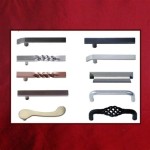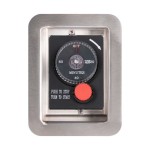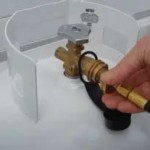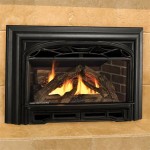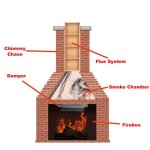Understanding the Importance of a Gas Fireplace Glass Gasket
A gas fireplace provides both aesthetic appeal and supplemental heating to a home. The glass door, a prominent feature of most gas fireplaces, allows for a clear view of the flames while also serving a crucial safety function. Essential to the effectiveness and safety of this glass door is the glass gasket. This component, often overlooked, plays a vital role in maintaining the fireplace's operation and protecting the home's occupants. Without a properly functioning gasket, the fireplace can become inefficient, pose safety risks, and potentially damage other components.
The glass gasket, also known as a glass seal, is a heat-resistant material that sits between the glass door and the metal frame of the fireplace. Its primary purpose is to create an airtight seal. This seal is crucial for preventing the escape of noxious gases, such as carbon monoxide, into the living space. It also contributes to the overall efficiency of the fireplace by ensuring proper combustion and preventing drafts. Understanding the function and importance of this relatively small component is paramount for maintaining a safe and efficient gas fireplace.
The Critical Role of Gas Sealing
The primary function of the gas fireplace glass gasket is to create an airtight seal. This seal is essential for several reasons. Firstly, it prevents the leakage of dangerous gases, most notably carbon monoxide, into the home. Carbon monoxide is a colorless, odorless gas produced during the incomplete combustion of fuels. Exposure to even small amounts of carbon monoxide can lead to serious health problems, including headaches, dizziness, nausea, and even death. A properly functioning gasket ensures that combustion byproducts are vented properly through the chimney or venting system, minimizing the risk of carbon monoxide poisoning.
Secondly, the airtight seal contributes to the efficient operation of the fireplace. When the seal is intact, the fire draws air from the designated intake, promoting consistent and complete combustion. A leaky gasket, on the other hand, can allow unwanted air to enter the firebox, disrupting the combustion process. This can lead to incomplete combustion, resulting in lower heat output and increased production of soot and pollutants. The efficiency of the fireplace, therefore, is directly dependent on the integrity of the glass gasket. Furthermore, the seal helps to insulate the glass, preventing excessive heat loss to the surrounding environment.
Finally, the gas seal helps maintain the integrity of the fireplace system itself. By preventing the escape of hot gases and potential backdrafts, the gasket protects other components of the fireplace, such as the burner assembly and the venting system, from premature wear and tear. Proper sealing ensures that the system operates as intended, preventing damage and extending the lifespan of the fireplace.
Recognizing Signs of a Deteriorated Gasket
Recognizing the signs of a failing or deteriorated glass gasket is crucial for proactive maintenance and safety. A visual inspection is often the first and easiest step in assessing the condition of the gasket. Look for cracks, breaks, or signs of hardening and brittleness. A healthy gasket should be pliable and resilient. A gasket that has become stiff or brittle is likely no longer providing an effective seal and needs replacement.
Another indicator of a failing gasket is the presence of soot or discoloration around the edges of the glass door. This suggests that gases are leaking from the firebox, indicating a compromised seal. Similarly, if a smoky odor is detected in the room while the fireplace is in operation, it could be a sign that combustion byproducts are escaping due to a faulty gasket. These occurrences warrant immediate investigation and potential gasket replacement.
Decreased fireplace efficiency, such as a noticeable reduction in heat output or difficulty maintaining a consistent flame, can also be attributed to a failing gasket. When the seal is compromised, the firebox may not achieve optimal temperatures, leading to inefficient combustion and reduced heating performance. In some cases, you might feel drafts around the fireplace when it’s not in use, which can point to a leaking gasket. Addressing these issues promptly can prevent further damage and ensure the continued safe and efficient operation of the gas fireplace.
Selecting and Installing a Replacement Gasket
When a gas fireplace glass gasket deteriorates, replacing it is essential for maintaining a safe and functional fireplace. The process involves selecting the correct type of gasket and installing it properly. When selecting a replacement gasket, it's crucial to identify the correct size and style for the specific fireplace model. Gaskets come in various shapes and thicknesses, and using the wrong type can compromise the seal. Consult the fireplace manufacturer's instructions or contact a qualified technician for guidance on selecting the appropriate replacement.
Before installing the new gasket, carefully remove the old one. This often involves scraping away the old adhesive and cleaning the surface thoroughly to ensure a good bond for the new gasket. Use a solvent to remove any residual adhesive. It is also imperative to disengage the gas supply to the fireplace completely before any maintenance or repairs are started.
Apply the new gasket evenly around the perimeter of the glass door or frame, following the manufacturer's instructions for adhesive application. Ensure that the gasket is properly seated and making full contact with both the glass and the metal frame. After installation, allow the adhesive to cure completely before using the fireplace. This curing period is essential to allow the adhesive to bond properly and create a durable seal. Once the adhesive has cured, visually inspect the gasket to ensure that it is properly aligned and securely attached. Finally, it is advisable to have a professional perform a gas leak test to ensure that the seal is airtight and that the fireplace is operating safely.

Regency C34 Gas Stove Glass Gasket 846 684 936 240

How To Change Your Glass Gasket

Majestic Gasket Glass 12 10000992 Replaces 57317 Friendly Fires

Napoleon Gas Stove Fireplace Pellet Gasket Kit W562 0009 Friendly Fires

Window Glass Tape Gasket 301b Friendly Fires

Regency Window Glass Tape Gasket 6 Kit 936 243 Impressive Climate

Regency Glass Gasket Tadpole Style 936 159 50803 Impressive Climate

Window Glass Tape Gasket 301b Friendly Fires

Wood Stove Gasket 3 4 Door Kit Rope Replacement For Or Fireplace Doors Grey Color Fiberglass High Temperature Resistant With Cement And Self Adhesive Tape Com

Easy Fireplace Insert And Wood Stove Gasket Finder

